Ella White Works with Gitanyow Nation to Reframe Story of 1928 Visit by Artist Emily Carr
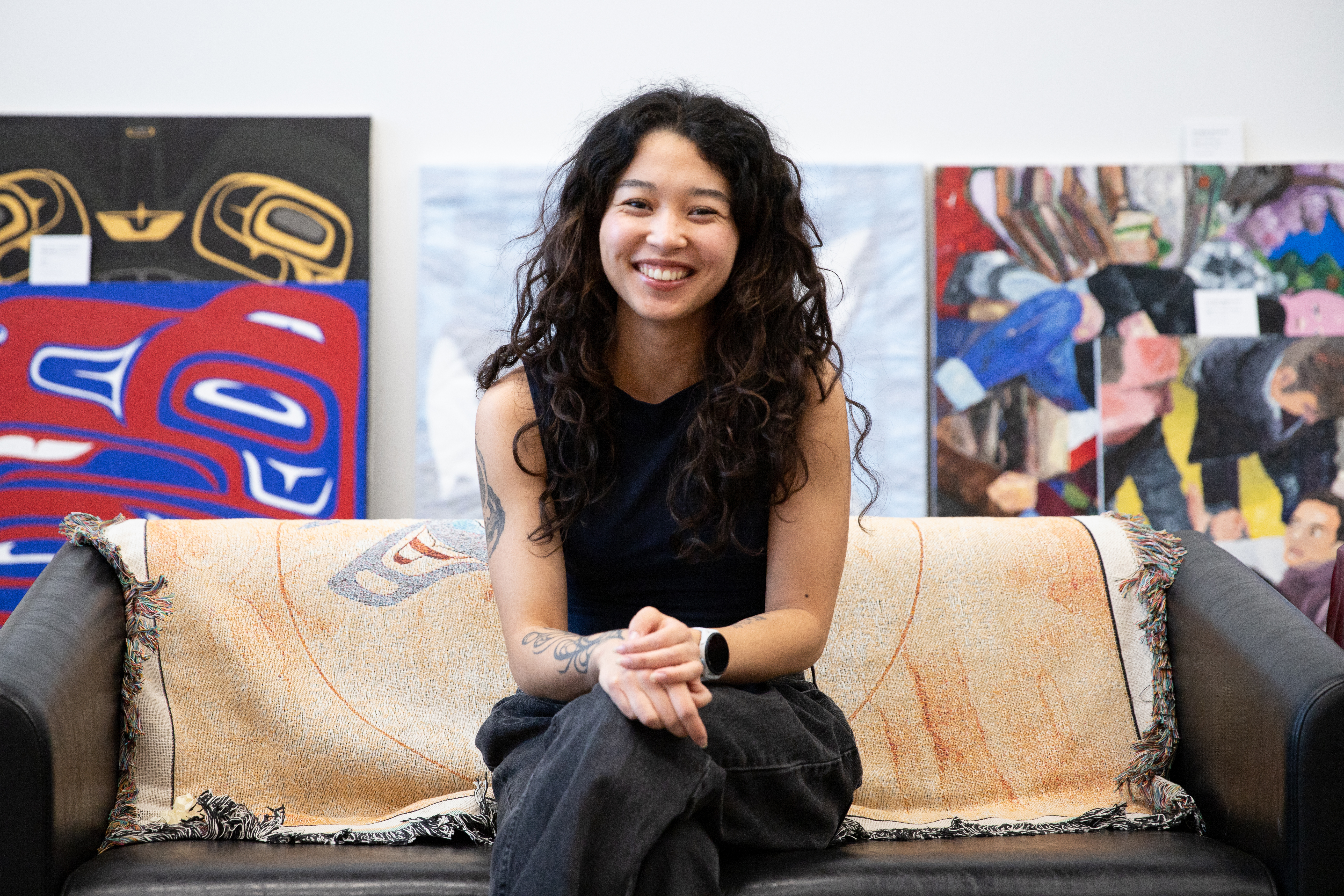
Artist and ศซร๑ฒสฦฑ student Ella White in the Aboriginal Gathering Place at Emily Carr University in 2025. Pictured in the background are artworks by Bear Barnetson (left) and Christian Abt. Blanket by Carmen Redunante. (Photo by Perrin Grauer)
Posted on | Updated
The artist and ศซร๑ฒสฦฑ student is working with the First Nation to spotlight its history as it prepares to reopen its museum.
Visual Arts student is part of an ongoing project to spotlight the Gitanyow Nationโs account of a 1928 visit to their territory by famed painter Emily Carr.
Led in partnership with the Gitanyow Nation and , the research initiative has seen Ella combing through public and personal archives, artworks, books and other materials to assemble a narrative for a feature in the Gitanyow Nationโs museum during its grand reopening in 2027.
โEmily Carr writes about visiting the Gitanyow in her book,โ Ella says, noting that for nearly a century, this version of the story was the only one most people ever encountered. Ellaโs detailed exploration of the Gitanyowโs perspective aims to change that.
โIโve been condensing my research into something like a book to pass along to the next team who will be producing animation or artwork about the story. Iโm also sharing everything with the Gitanyow and the AGP to make sure I'm focused on the concepts that meet everyoneโs expectations.โ
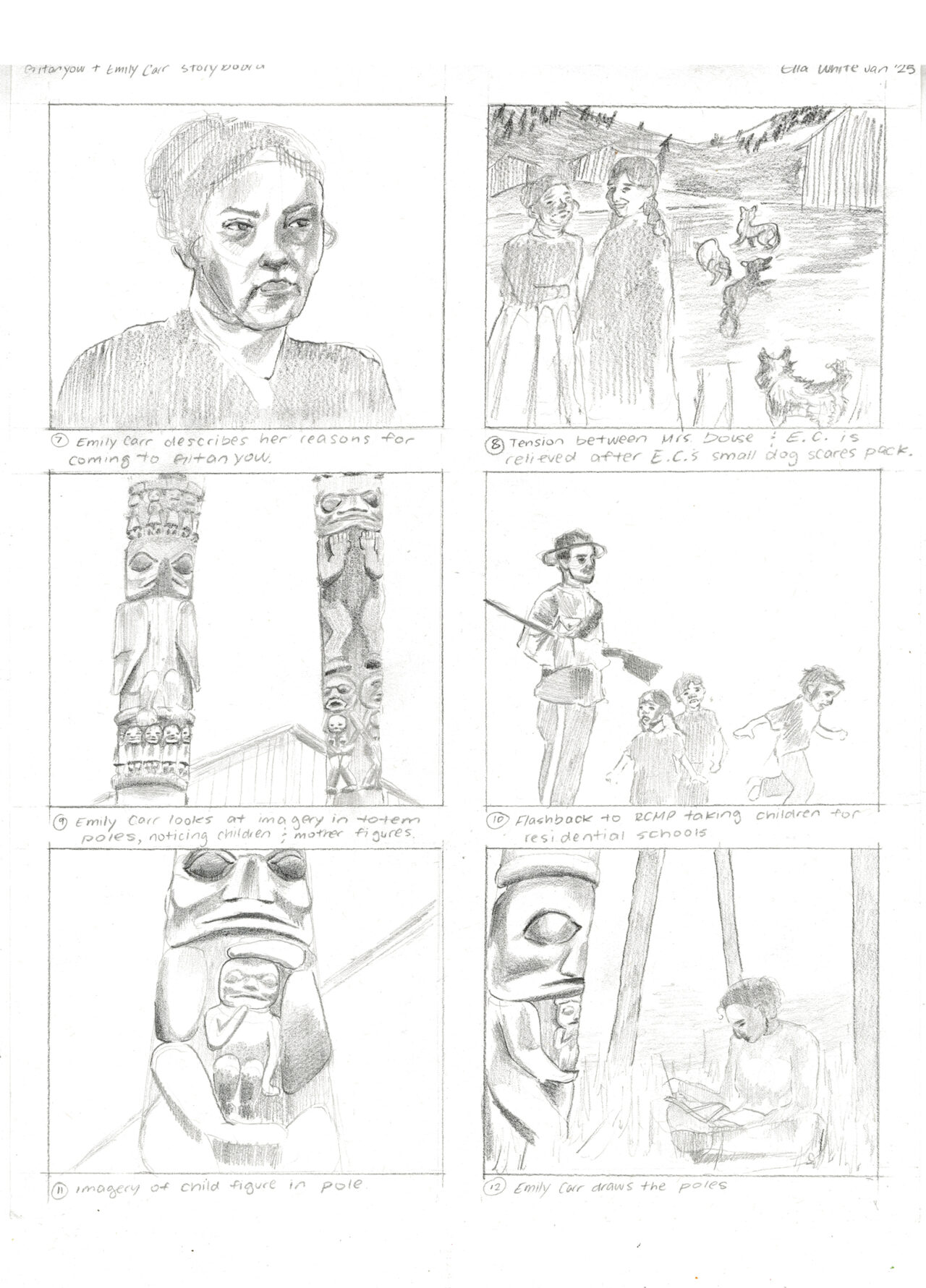
โItโs good to know when you need to be precious with the material,โ Ella says. (Storyboard by / courtesy Ella White)
Ella, who is of Japanese and Gitxaaลa ancestry, notes her practice often involves working with sensitive and disparate materials. Such projects have taught her how to look for unexpected connections and put diverse records into conversation with one another. They have also taught her when to allow space for her materials to breathe.
โItโs good to know when to draw that line โ when you need to be precious with the material,โ she says. โFor instance, working on a piece about my grandmaโs experience of the Japanese Canadian Internment, I knew right away there was one image I didnโt want to alter in the ways Iโd altered others. This project with the Gitanyow has also been about exploring the materials and deciding what boundaries can be crossed and what needs to stay as it is.โ
Ella became involved with the project through the (AGP) at ศซร๑ฒสฦฑ, which was tapped by Mitacs to identify a student to engage with this reasearch.
Daina Warren, Executive Director, Indigenous issues, says Ellaโs work โspeaks volumesโ about her proficiency as an artist and researcher.
โWeโre so fortunate Ella decided to take this work on,โ Daina says. โItโs a real hands-on learning opportunity, and itโll show people the breadth of what she can do with her practice and what sheโs capable of as a professional.โ
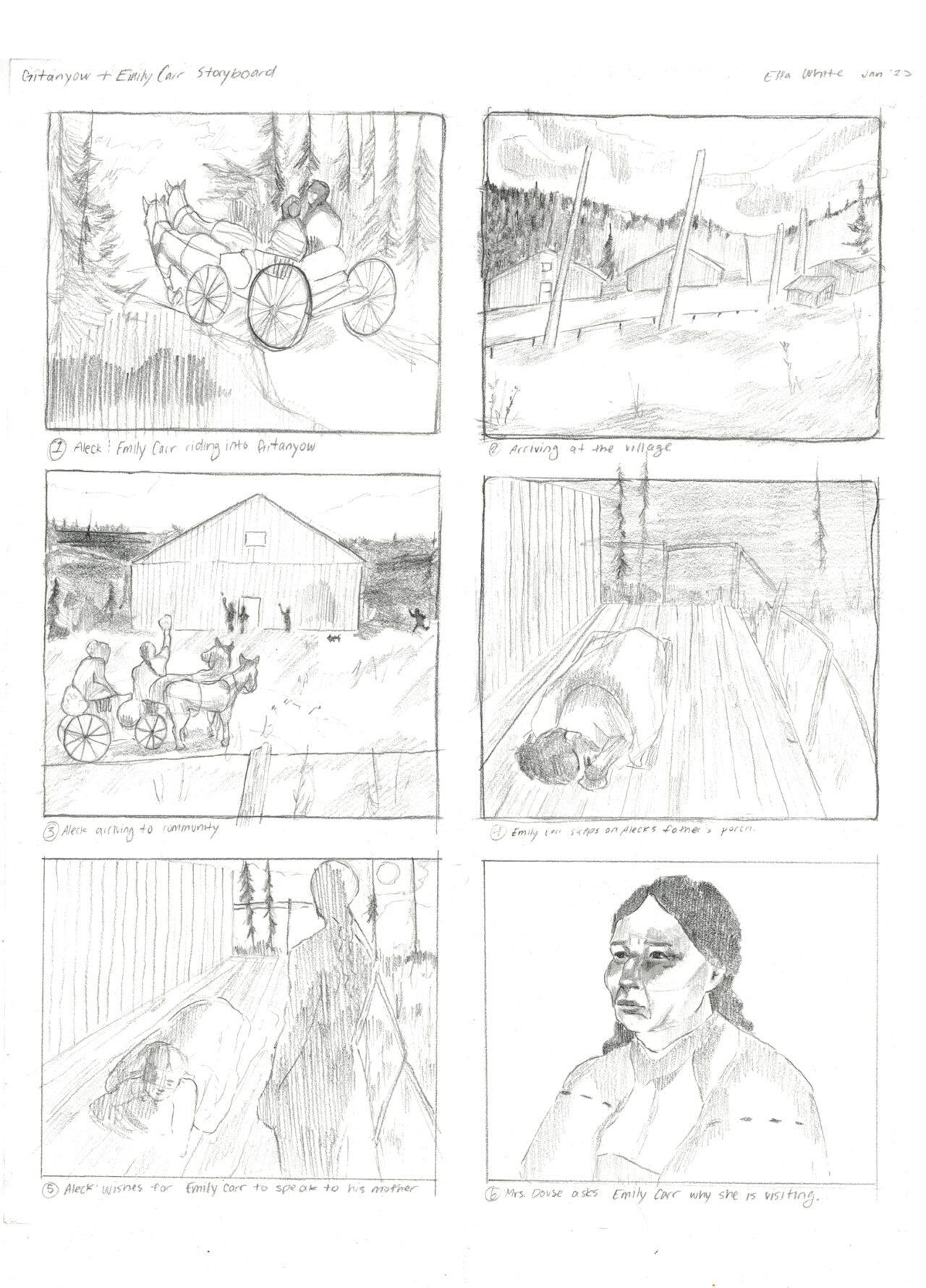
โEmily Carr was aware of our peopleโs reputation and was quite brave,โ says Joel Starlund, executive director of Gitanyow Hereditary Chiefs. (Storyboard by / courtesy Ella White)
Emily Carr stayed in Gitanyow โ then known as Kitwancool โ for six days, completing a series of paintings. While she demonstrated reverence for the Gitanyow people, Ella notes her writing suggests more ambivalent aims.
โFor me, the troubling part of her account was her intention to paint the totem poles as a way of keeping them alive because she assumed they were going to disappear โ that she was somehow preserving a vanishing culture,โ she says.
But Gitanyow culture was far from disappearing. And in many ways, the communityโs struggles and preoccupations remain as intact as its culture.
Joel Starlund, executive director of , notes Emily Carr arrived in Gitanyow less than a year after another significant event for the Nation. In 1927, five of its hereditary Chiefs were arrested for obstructing a group of government surveyors and out-of-uniform RCMP officers staking land for reserves.
Even before the arrest, Gitanyowโs resistance to government land-claims had begun evolving into a general wariness of outsiders, Joel adds. The conviction and sentencing of four of its Chiefs in an Ottawa court only further aggravated that dynamic.
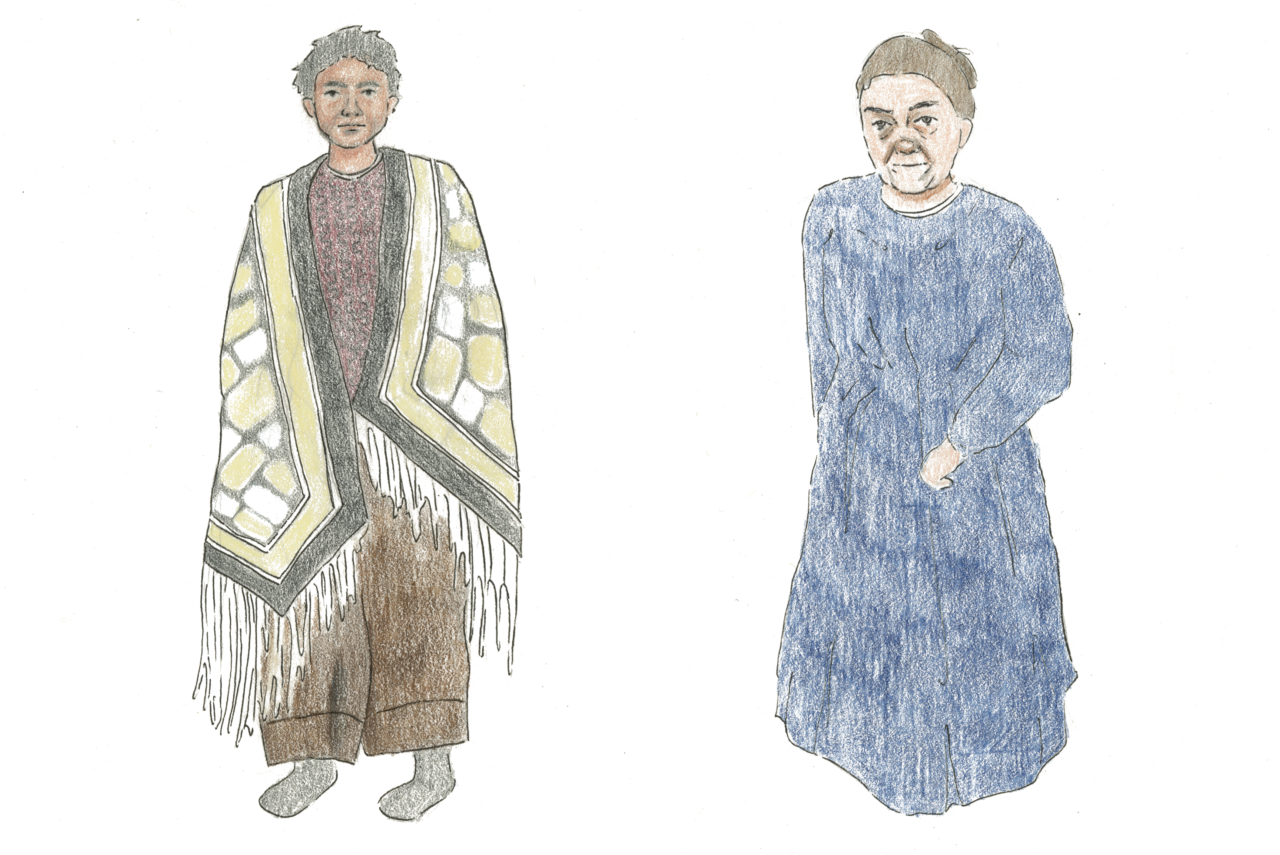
โItโs a full-circle moment weโre looking to capture,โ Joel says. (Portraits of Aleck Douse and Emily Carr by / courtesy Ella White)
A fifth Chief was released on suspended sentence and boarded a train to return home. It was at the station that he met a young artist, Joel says.
โEmily Carr was aware of our peopleโs reputation and was quite brave; she was at the train station looking for a ride on a wagon to Kitwancool,โ he says. โShe ran into this young man whoโd just been arrested for protecting the territory and caught a ride with him, realizing he was, she said, a hero. And he was treated as a hero when he returned home.โ
A century later, the history of both events is still a living one, Joel continues. The Gitanyow have been fighting for their land ever since, and in 2024, its Chiefs filed suit seeking Aboriginal title to their territory. is scheduled for May 2025.
And as the centennial of the 1927 arrests approaches, the Nation is working to foreground its history, including their communityโs encounter with Emily Carr. That a student from an institution named for the celebrated painter is involved in the project offers a kind of poetic symmetry, Joel suggests.
โItโs a full-circle moment weโre looking to capture,โ he says. โAnd Ella has been very receptive to our goals of showing the different perspectives on this story. Sheโs been a pleasure to work with.โ
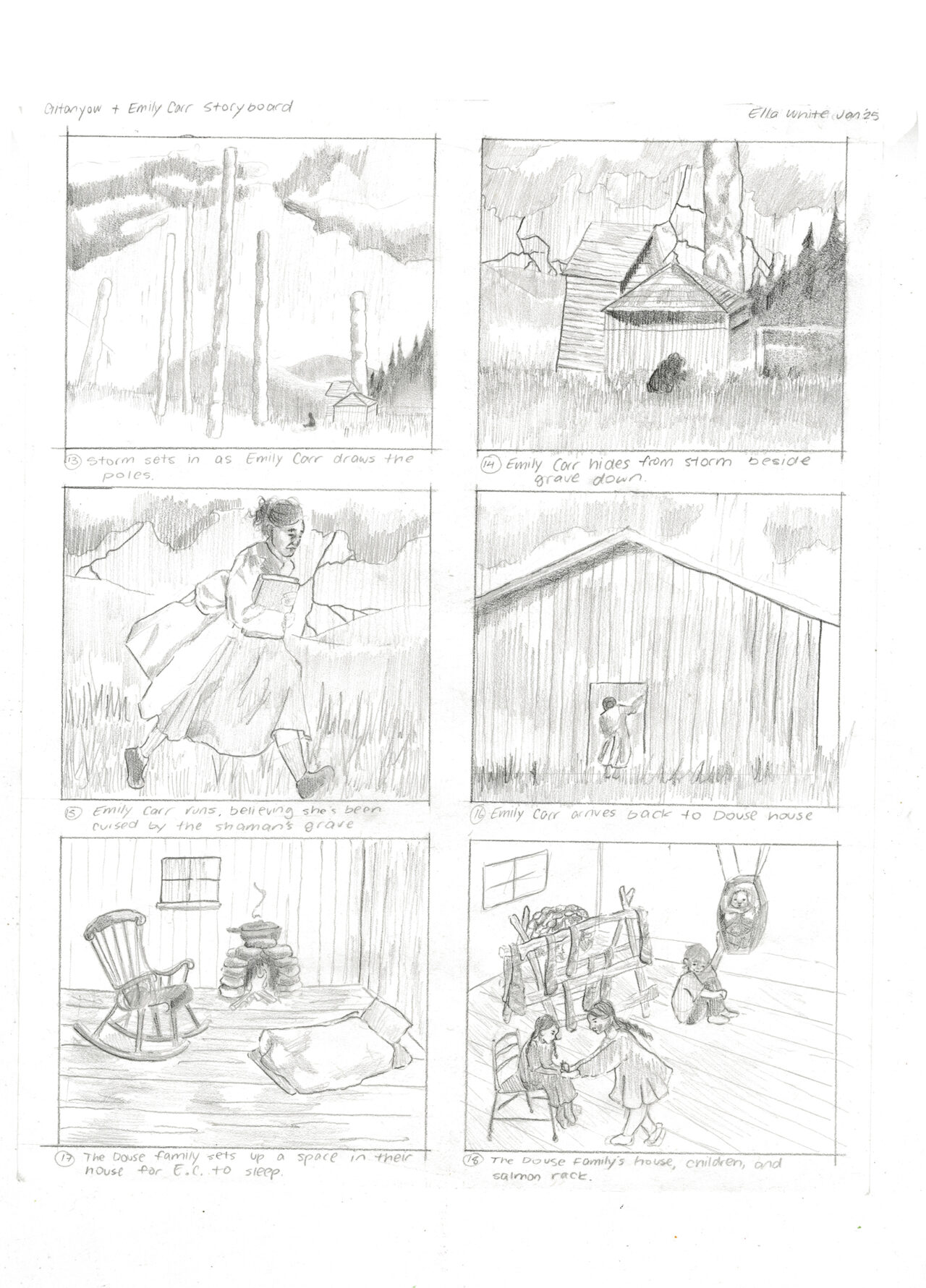
โI grew up in Vancouver, and Iโve never done in-depth research on my own Nation; this project has opened that gateway for me,โ Ella says. (Storyboard by / courtesy Ella White)
Ella says that working with the Gitanyow has brought an interest in her personal history into focus.
โI grew up in Vancouver, and Iโve never done in-depth research on my own Nation; this project has opened that gateway for me,โ she says. โI havenโt dedicated enough time to looking into resources, and this project has piqued my interest. Itโs a future project.โ
and funding initiatives via their website.